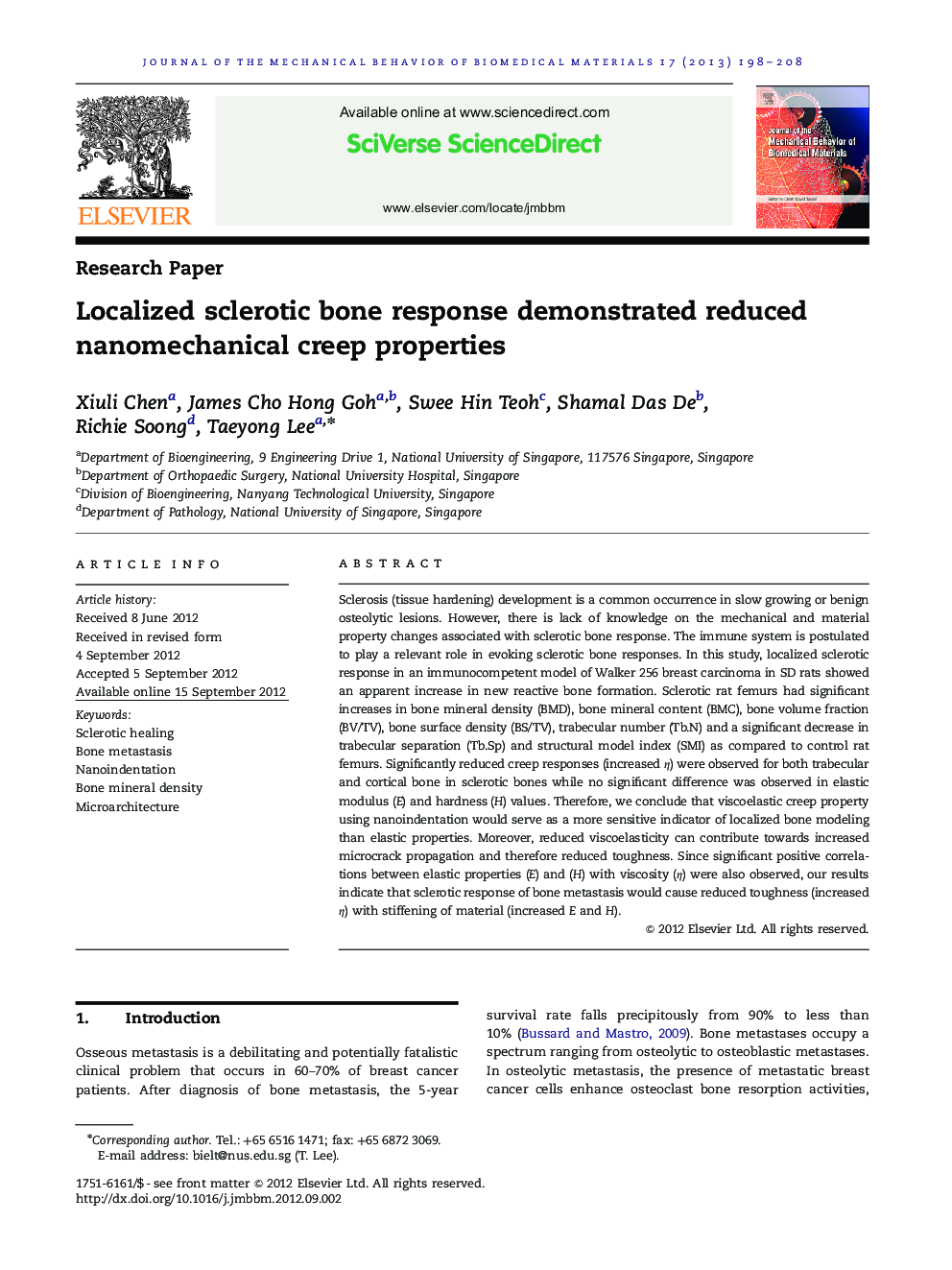| Article ID | Journal | Published Year | Pages | File Type |
|---|---|---|---|---|
| 810979 | Journal of the Mechanical Behavior of Biomedical Materials | 2013 | 11 Pages |
Sclerosis (tissue hardening) development is a common occurrence in slow growing or benign osteolytic lesions. However, there is lack of knowledge on the mechanical and material property changes associated with sclerotic bone response. The immune system is postulated to play a relevant role in evoking sclerotic bone responses. In this study, localized sclerotic response in an immunocompetent model of Walker 256 breast carcinoma in SD rats showed an apparent increase in new reactive bone formation. Sclerotic rat femurs had significant increases in bone mineral density (BMD), bone mineral content (BMC), bone volume fraction (BV/TV), bone surface density (BS/TV), trabecular number (Tb.N) and a significant decrease in trabecular separation (Tb.Sp) and structural model index (SMI) as compared to control rat femurs. Significantly reduced creep responses (increased η) were observed for both trabecular and cortical bone in sclerotic bones while no significant difference was observed in elastic modulus (E) and hardness (H) values. Therefore, we conclude that viscoelastic creep property using nanoindentation would serve as a more sensitive indicator of localized bone modeling than elastic properties. Moreover, reduced viscoelasticity can contribute towards increased microcrack propagation and therefore reduced toughness. Since significant positive correlations between elastic properties (E) and (H) with viscosity (η) were also observed, our results indicate that sclerotic response of bone metastasis would cause reduced toughness (increased η) with stiffening of material (increased E and H).
Graphical abstractFigure optionsDownload full-size imageDownload high-quality image (161 K)Download as PowerPoint slideHighlights► Sclerosis healing flare was observed with increased osteoblast activities. ► Sclerosis causes enhanced bone mass and microstructure but reduced creep. ► Creep response could serve as sensitive indicator of local tissue modeling. ► Sclerosis reduces material toughness but likely increases stiffness.
